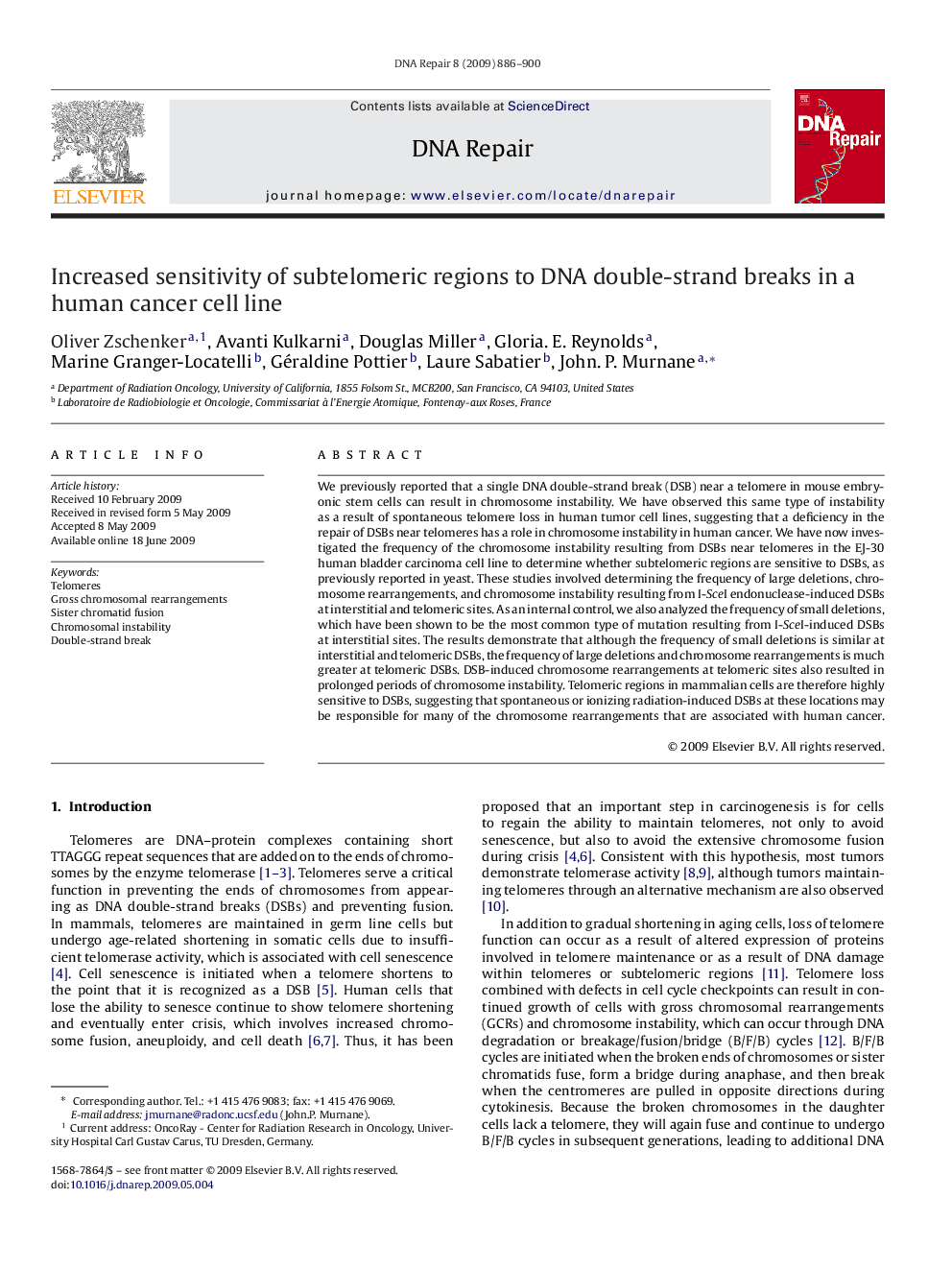| Article ID | Journal | Published Year | Pages | File Type |
|---|---|---|---|---|
| 1980736 | DNA Repair | 2009 | 15 Pages |
We previously reported that a single DNA double-strand break (DSB) near a telomere in mouse embryonic stem cells can result in chromosome instability. We have observed this same type of instability as a result of spontaneous telomere loss in human tumor cell lines, suggesting that a deficiency in the repair of DSBs near telomeres has a role in chromosome instability in human cancer. We have now investigated the frequency of the chromosome instability resulting from DSBs near telomeres in the EJ-30 human bladder carcinoma cell line to determine whether subtelomeric regions are sensitive to DSBs, as previously reported in yeast. These studies involved determining the frequency of large deletions, chromosome rearrangements, and chromosome instability resulting from I-SceI endonuclease-induced DSBs at interstitial and telomeric sites. As an internal control, we also analyzed the frequency of small deletions, which have been shown to be the most common type of mutation resulting from I-SceI-induced DSBs at interstitial sites. The results demonstrate that although the frequency of small deletions is similar at interstitial and telomeric DSBs, the frequency of large deletions and chromosome rearrangements is much greater at telomeric DSBs. DSB-induced chromosome rearrangements at telomeric sites also resulted in prolonged periods of chromosome instability. Telomeric regions in mammalian cells are therefore highly sensitive to DSBs, suggesting that spontaneous or ionizing radiation-induced DSBs at these locations may be responsible for many of the chromosome rearrangements that are associated with human cancer.
